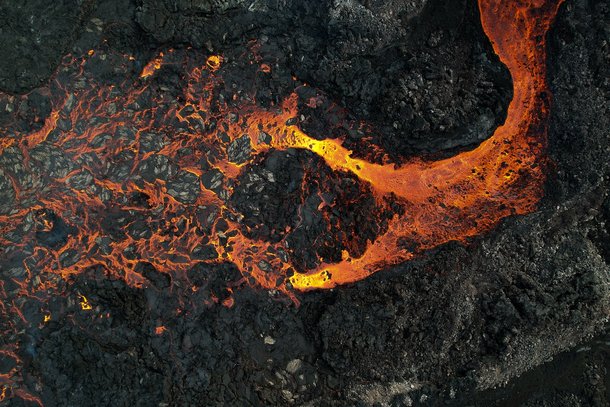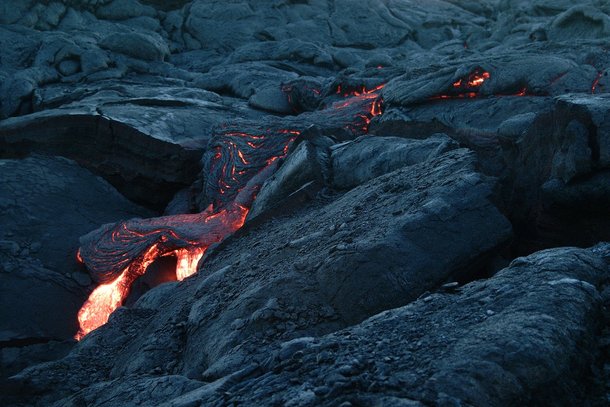Os vulcões estão entre os fenômenos mais incríveis da natureza. Em alguns casos, até nos dão a chance de obter vídeos surpreendentes e imagens impressionantes.
Com certeza você já se perguntou o que aconteceria com você se, por um acaso, caísse em um mar de pedra derretida, certo? Nas últimas semanas, um antigo vídeo simulando esse questionamento se tornou viral. Descubra a resposta agora!
O experimento
 (Fonte: Björn Austmar Þórsson/Pexels)
(Fonte: Björn Austmar Þórsson/Pexels)
O experimento em si é bastante simples: uma bola de lixo orgânico pesando cerca de 30 quilos foi jogada no lago ativo de Erta Ale, um vulcão ativo localizado na Etiópia. A bola era composta por material orgânico, algo mais próximo da fisiologia humana, para então, se obter uma simulação do que aconteceria com um ser humano em um acidente do tipo.
Assim, no momento em que a matéria orgânica atingiu a lava, a primeira camada de cinza, que se encontra solidificada sobre a lava “mole”, se rompe e o material é “engolido”. Em resposta ao processo, surge uma fonte de lava borbulhante crescente.
O que acontece com um ser humano ao cair em um vulcão?
Basicamente, o calor em temperaturas extremamente altas queimaria os pulmões e levaria os órgãos à falência. A água de nosso corpo ferveria em vapor, enquanto a lava age derretendo o corpo de fora para dentro.
Mas não é preciso se preocupar com todo esse processo: os gases vulcânicos te deixariam inconsciente antes de tudo acontecer. Aliás, já tivemos situações reais disso.
No mês de setembro de 2017, um garoto de 11 anos, bem como seus pais, morreram após caírem na cratera Solfatara di Pozzuoli, um dos 40 vulcões situados na região de Campi Flegrei, a oeste de Nápoles. Na época, foi noticiado que o menino aparentemente sofreu um desmaio devido aos gases do vulcão antes de cair na cratera. Seus pais tentaram ajudá-lo, mas a cratera acabou desabando.
Por outro lado, também temos sobreviventes. No ano de 2007, um homem caiu em um poço de lava um pouco mais fria na Tanzânia. Segundo um relatório do Smithsonian, a lava estava a uma temperatura de cerca de 537?°C, mas o homem sobreviveu. No entanto, mesmo cinco meses após o ocorrido, ele ainda estava se recuperando e sofrendo com intensas dores.
Os reais perigos dos vulcões
 (Fonte: Brent Keane/Pexels)
(Fonte: Brent Keane/Pexels)
A lava de um vulcão pode parecer assustadora, mas essa não é a única coisa com a qual devemos nos preocupar. A lava tende a fluir devagar, então as pessoas próximas podem conseguir escapar dela. No entanto, isso nem sempre acontece. Ou melhor, nem sempre dá para fugir.
Um exemplo vem do ano 1977, quando a lava do vulcão Nyiragongo, situado na República Democrática do Congo, acabou matando cerca de 300 pessoas ao atingir aldeias nas proximidades.
Outro perigo real de um vulcão se deve aos fluxos de lama vulcânica, também conhecidos como lahars. Basicamente, esses fluxos possuem consistência de concreto e podem descer de um vulcão a uma velocidade superior a 200 km/h. Para exemplificar, em 1985, um lahar do vulcão Nevado del Ruiz, localizado na Colômbia, acabou submergindo uma cidade inteira. O resultado foi a morte de 25 mil pessoas. Na maioria das vezes, não dá para se desviar ou fugir desses fluxos.
Fora isso, ainda temos os fluxos piroclásticos, nuvens compostas de rochas, gases e outros detritos vulcânicos, um verdadeiro apocalipse. Aqui, a velocidade pode chegar a 80 km/h com temperaturas entre 200 e 700 graus Celsius. Aliás, foi um fluxo piroclástico que acabou com a cidade de Pompeia e seus cidadãos em 79 d.C.
Fonte: MegaCurioso.